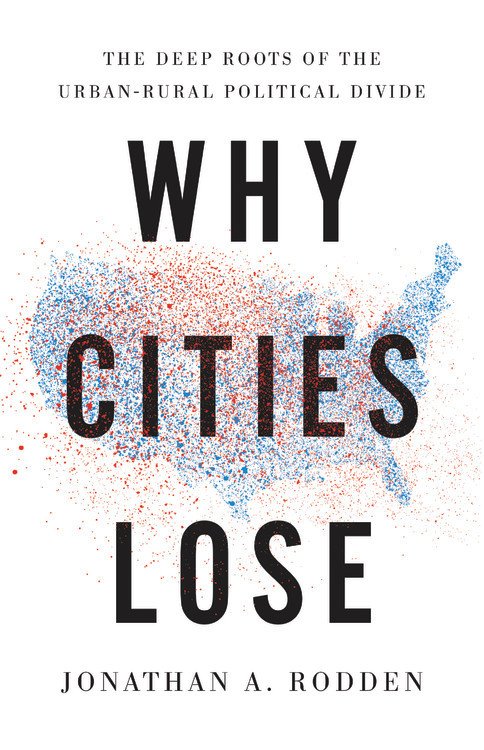Book Review: Why Cities Lose

Why Cities Lose: The Deep Roots of the Urban-Rural Political Divide is a book about political polarization between urban and rural areas by Jonathan A. Rodden, professor of political science at Stanford University and senior fellow at the Hoover Institution. The book explains the history of the urban-rural divide from the 19th century to the present, primarily in the United States and Commonwealth countries.
In the introduction, Rodden introduces the problem that occupies most of the book: the difference between vote share and seat share in legislative bodies for US Democrats. He compares this to proportional representation (hereafter PR, as in the book) in the multiparty democracies of continental Europe. He mentions some of the history that will be discussed in greater detail in the book proper. Rodden notes that gerrymandering is a smaller part of the story than most analysts believe, while urban-rural polarization is a much larger, intricate, and more important part.
Chapter 1 begins with the Reading Railroad strike of 1877, near the beginning of the labor movement in the United States that led to the formation of the Socialist Party. Rodden notes similar developments in other countries during the late 19th century and draws parallels between them throughout the book to show that urban-rural polarization is not uniquely American, although the rigid two-party system is. The distribution of manufacturing centers in 1880 and a map of Reading, Penn. are used to help explain political geography in terms of where the factory laborers who became unionized were living and working. Rodden explains how the Socialists were subsumed into the Democrats during the FDR presidency and compares this to what happened to similar parties in Europe and Australasia. He then discusses the adoption of PR in some countries and its lack of adoption in others, as well as the difference between presidential systems and parliamentary systems of government.
The second chapter goes into greater detail about the integration of the Socialists and other labor interests into the Democratic Party. The effects of this on urban-rural polarization and Democratic representation are analyzed here. Rodden begins by comparing the correlation between population density and Democratic support in Pennsylvania in every election from 1916 to 2016, showing the polarization not only develop in recent years, but reverse during the New Deal era. Next, he studies this more broadly, comparing the manufacturing core, the South, and other regions over the same century. The role of Southern segregation and the Civil Rights Movement in this polarization are discussed, but the impact of George Wallace's third-party presidential bid in 1968 goes unmentioned despite being clearly visible in the graph. After explaining why manufacturing moved away from its earlier geographical arrangement, Rodden shows that the political geography of the Industrial Revolution lingers on today by correlating the 2016 election results with the geographical arrangement of manufacturing in 1920 and 2010, respectively, and finding stronger correlation in the former case. To bolster this argument, he shows a map of Reading's rail systems and its 2016 precinct vote proportions for Hillary Clinton. Similar maps of Philadelphia, Pittsburgh, and Cleveland are then shown for broader perspective. The history of changes in demographics and social organizations in the Rust Belt is covered so that the reader can see how railroad corridors remained Democratic strongholds long after the industries shut down. Rodden credits the role of family beliefs passed through generations as well, which is often overlooked. He concludes the chapter by broadening to the entire United States, finding that each region has its own pattern over time because other parts of the country developed differently from the Rust Belt.
Read the entire article at ZerothPosition.com